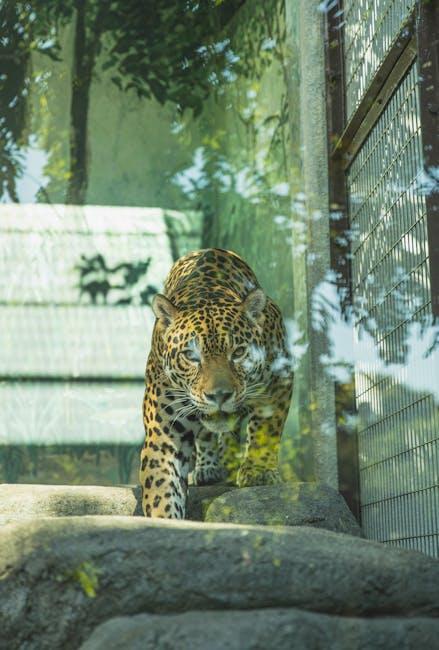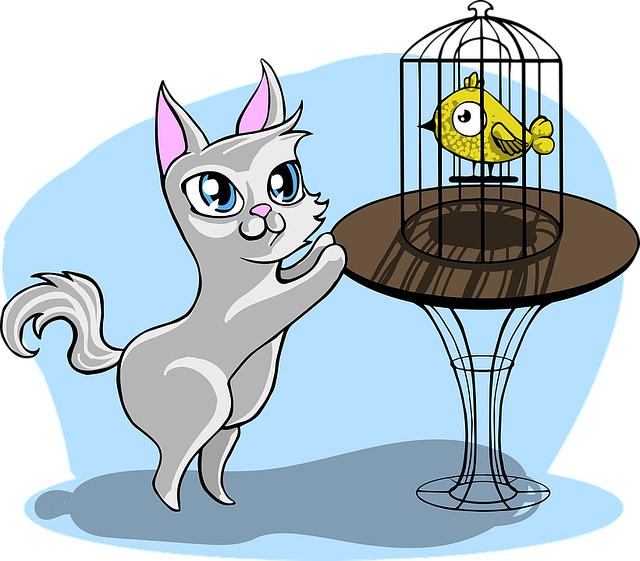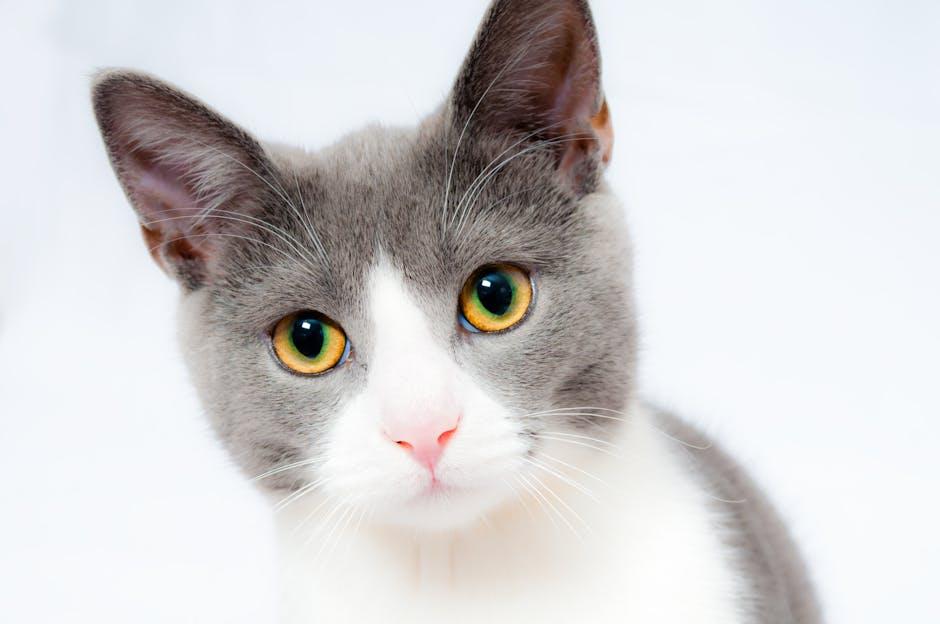In the world of feline adventures, a cozy and secure cat cage can be a sanctuary for your beloved pet. Whether you’re a seasoned cat parent or a newcomer to the joys of feline companionship, understanding the intricacies of choosing and using a cat cage can enhance both your and your cat’s lifestyle. This article delves into the essentials of ”My cat cage” – a guide designed to help you create a safe, comfortable haven that perfectly balances freedom and security for your furry friend. Join us as we explore the features, benefits, and innovative ideas that can transform this simple structure into a place of comfort and joy for your cat.
Table of Contents
- Choosing the Perfect Cat Cage: Factors to Consider
- The Benefits of a Comfortable and Safe Cat Cage
- Essential Features to Look for in a High-Quality Cat Cage
- How to Introduce Your Cat to a New Cage: Tips and Techniques
- Q&A
- The Conclusion

Choosing the Perfect Cat Cage: Factors to Consider
Selecting the right cage for your feline friend requires careful consideration of several key factors. The first thing to ponder is the size of the cage. Cats come in all shapes and sizes, and so should their living spaces. Some cats prefer smaller, cozier dens, while others might need more room to stretch and roam. It’s crucial to choose a cage that comfortably accommodates your cat’s dimensions and activity levels[[1]].
Material is another significant factor. Two popular options are laminate and stainless steel. Laminate cages provide a more homey and warmer environment, which may be more comfortable for some cats. They’re also easier to clean and can reduce stress for more anxious animals. On the other hand, stainless-steel cages are extremely durable and hygienic, often preferred in professional settings for their ease of disinfection and longevity[[1]].
The environmental factors within the cage also play a vital role in your cat’s well-being. Elements such as usable floor space should allow enough area for movement, and food and water placement should be easily accessible yet spaced out to avoid contamination. Consider also the ventilation within the cage to ensure fresh airflow, maintaining a healthy atmosphere[[2]].
Lastly, think about your cat’s behavioral needs. Do they require a space that’s easy to retreat into or one that offers clear visibility? Examining your cat’s disposition—whether they are social butterflies or shy prisoners—can significantly influence your choice. Cats with special needs, such as those requiring a specific type of litter or those with mobility issues, will need tailored setups that cater to their comfort and health[[3]].
| Factor | Consideration |
|---|---|
| Size | Must match cat’s physical size and activity level |
| Material | Laminate offers comfort; stainless steel offers durability |
| Environment | Usable space, food/water placement, good ventilation |
| Behavioral Needs | Preference for visibility, space to retreat, special needs |
The Benefits of a Comfortable and Safe Cat Cage
A thoughtfully designed cat cage provides numerous benefits that can enhance the wellbeing of your feline friend. It offers a secure environment where your cat can feel safe and calm, particularly during times of stress or change. This controlled space is crucial for activities such as travel, vet visits, or when introducing your cat to a new environment in your home.
Key Benefits Include:
Safety and Security: A well-constructed cat cage keeps your cat protected from potentially hazardous situations, such as household accidents or outdoor dangers. It can also prevent your pet from ingesting harmful substances or escaping during travel.
Comfortable Rest Environment: With cozy bedding and familiar scents, a cat cage can become a soothing retreat for your feline. This is especially useful when your cat needs time to itself or a break from the hustle and bustle of daily household activities.
Health Management: For cats recuperating from surgery, illness, or injury, a cage can provide a controlled environment that supports recovery. It limits movement to prevent further injury and allows you to monitor your pet’s progress closely.
| Feature | Benefit |
|---|---|
| Ventilation | Ensures fresh air circulation |
| Padding | Improves comfort levels |
| Visibility | Reduces anxiety by allowing the cat to see its surroundings |
| Portability | Makes travel safe and stress-free |
By providing a comfortable and secure space, cat cages can also play an essential role in behavior management. This controlled environment can help address issues such as excessive anxiety and destructive behavior by offering a safe haven where the cat feels relaxed and secure.
A multi-functional cat cage can include elements that cater to your cat’s needs, offering an ideal blend of security, comfort, and mental stimulation. From well-placed scratching posts to engaging toys, creating a rich and stimulating environment within the cage can turn it into a cherished space for your feline companion.
For more on the subject, you can read about the benefits of outdoor enclosures for cats here[[2]].
Essential Features to Look for in a High-Quality Cat Cage
When selecting a top-notch cat cage, there are several pivotal features to consider ensuring your feline’s comfort, safety, and well-being. Prioritizing these aspects will help you find a cage that meets both your needs and your cat’s needs.
Sturdy Construction
A high-quality cat cage should be constructed from durable materials. Look for cages made of high-quality metal wire, which provide longevity and structural integrity. A robust construction will not only resist wear and tear over time but also withstand any escapade attempts by your curious cat. The detachable metal wire kennel is an excellent example, as it is built to endure while maintaining a secure environment.
Comfort and Accessibility
To ensure your cat feels at home, focus on comfort and accessibility features. Cages with multiple entry points (such as double doors) allow easy access for cleaning and interaction. Additionally, detachable components can enhance versatility, allowing for easy cleaning and transportation. Ensuring your cat can move in and out freely will reduce stress and make the cage more inviting.
Safety Features
Safety is paramount when choosing a cat cage. Look for features that prevent your pet from escaping or getting injured. Internal tethers or locking mechanisms can provide extra security, especially for particularly clever cats. Moreover, ensure the cage design minimizes sharp edges and tight spaces where a cat might get stuck.
Customizability and Practicality
A customizable cat cage allows you to tailor the environment to your cat’s specific needs. Consider cages with adjustable shelves or platforms to create a dynamic and engaging space for your feline friend. This flexibility will not only keep your cat entertained but can also be adapted as they grow or their preferences change. Products like the ones at Suncatcher Bird Cages & Enclosures offer customizable options that can be tailored to a variety of pets, ensuring a flexible and practical solution.
Weather Resistance
If you plan to use the cage outdoors, weather-resistant materials are crucial. Look for cages with protective coatings against rust and corrosion, as well as features like rain covers. This will ensure the cage remains in good condition regardless of weather changes, keeping your pet safe and dry.
| Feature | Benefits |
|---|---|
| Sturdy Construction | Long-lasting durability and safety |
| Comfort and Accessibility | Enhanced feline comfort and ease of use |
| Safety Features | Prevents escapes and accidents |
| Customizability | Personalized environment to suit your cat’s needs |
| Weather Resistance | Durable in varying weather conditions |
By considering these essential features, you can ensure your cat’s cage is both a haven and a fortress, providing a safe, comfortable, and customizable environment for your furry friend.

How to Introduce Your Cat to a New Cage: Tips and Techniques
Introducing your feline friend to a new cage can be a seamless experience with the right approach. Start by making the cage an inviting space. Line the interior with a soft blanket or your cat’s favorite bed to create a cozy nook. Place some treats or catnip inside to entice them to explore and associate the cage with positive experiences.
- Gradual Introduction: Allow your cat to explore the cage at their own pace. Leave the door open initially so they don’t feel trapped. Observe their behavior and provide gentle encouragement with treats or toys.
- Positive Reinforcement: Reward your cat whenever they approach or enter the cage voluntarily. This can include treats, praise, or extra petting. The goal is to create a positive association with the new space.
- Patience is Key: Each cat is different; some may take to their new cage right away, while others might need more time. Avoid forcing them into the cage as it can create fear or stress.
| Step | Description |
|---|---|
| 1 | Place familiar bedding inside the cage |
| 2 | Leave the door open for exploration |
| 3 | Use treats and toys for encouragement |
| 4 | Reward with positive reinforcement |
| 5 | Gradually close the door for short periods |
Incorporate the cage into your cat’s daily routine by feeding them nearby or even inside the cage. Keep the door open while they eat so they do not feel confined. Over time, start closing the door for brief periods while they are inside, gradually extending the duration as they become more comfortable.
maintain a calm environment when introducing the cage. Noise and sudden movements can heighten your cat’s stress. Choosing a quiet time for this process can significantly enhance the acceptance and comfort of your pet in their new cage. With patience and positive reinforcement, your cat will soon view the cage as a safe and pleasant place.
Q&A
### Q&A: Understanding Cat Cages
Q1: What is a cat cage and why might I need one?
A1: A cat cage is a secure enclosure used to confine your cat safely in various situations. They can be useful for multiple purposes such as during travel, medical recovery, when introducing a new pet to the household, or managing behavioral issues. Proper usage ensures the cat’s safety and comfort in potentially stressful scenarios.
Q2: Are there different types of cat cages available?
A2: Yes, cat cages come in various types and sizes to cater to different needs. There are portable travel cages designed for car or air travel, larger enclosures for temporary indoor confinement, and outdoor playpens that allow your cat to experience the outdoors safely. Each type is made of different materials and features varying levels of portability and sturdiness.
Q3: How do I choose the right size cat cage for my pet?
A3: When selecting a cat cage, it’s crucial to consider your cat’s size and the intended use. The cage should be spacious enough for your cat to stand, turn around, and lie down comfortably. If the cage is for extended use, it should allow space for a litter box, food, and water bowls, along with some toys to keep your cat entertained.
Q4: Is it safe to travel with my cat in a cage?
A4: Traveling with your cat in a well-ventilated, secure cage is one of the safest methods. It prevents your cat from roaming freely in a moving vehicle, which can be dangerous. For air travel, you might need to comply with specific airline regulations regarding the cage’s size and features. Be sure to check these beforehand to ensure a smooth journey[2].
Q5: Can a cat cage help with introducing a new pet to the household?
A5: Absolutely. A cat cage can serve as a neutral space where the current pets and the new pet can see and smell each other without direct contact, reducing stress and the potential for aggressive interactions. Over time, this gradual introduction can help all the pets adjust to each other’s presence, fostering a peaceful home environment.
Q6: Are there ethical considerations when it comes to keeping a cat in a cage?
A6: The ethical use of a cat cage revolves around how often and for how long you confine your cat. It should never be a permanent living situation. Cages should be used as a temporary measure for specific situations, ensuring the cat’s well-being by providing adequate space, comfort, and stimulation. Prolonged confinement can lead to stress and behavioral issues, so it’s important to use cat cages responsibly and humanely[1].
Q7: What features should I look for in a good cat cage?
A7: A quality cat cage should have sturdy construction, good ventilation, and easy access doors. Look for cages with smooth interiors to prevent injury and additional features like removable trays for easy cleaning, secure locks, and optional cover or privacy panels. Portability is another factor if you plan to use the cage for travel or different locations within your home.
Q8: How can I make my cat’s time in the cage more comfortable?
A8: To make your cat’s cage time more pleasant, line the cage with a soft blanket or cat bed. Add familiar objects like their favorite toys or a piece of clothing that smells like you to provide comfort. Ensure they have access to water and, if needed, a small litter box. Interact with your cat regularly and let them out for supervised play whenever possible to keep them happy and engaged.
The Conclusion
finding the perfect cat cage is an essential step toward ensuring your feline friend’s safety, comfort, and happiness. Whether you need a cage for travel, training, or creating a cozy nook for your cat, taking the time to choose the right one can make all the difference. Remember, a well-selected cat cage can transform stressful situations into calm, manageable experiences for both you and your cat. So, explore your options, consider your kitty’s unique needs, and invest in a cat cage that promises peace of mind and contentment. Your furry companion deserves nothing less!







0 Comments